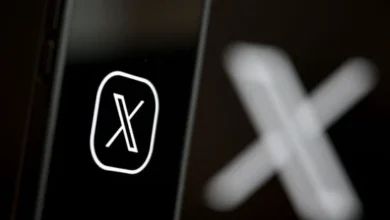Credit Card EMIs explained: What you need to know before converting your next purchase

People now extensively use credit cards for purchases on leading e-commerce platforms. The EMI method, also known as Equated Monthly Instalment, is gaining popularity for these transactions.
Before proceeding with any purchase, credit card users should understand what a credit card EMI is, including its advantages and disadvantages. This knowledge is critical for planning and managing repayments properly.
What is a credit card EMI?
A credit card EMI permits the cardholder to convert their purchase into fixed monthly instalments. This way, instead of paying the full amount upfront, the issuer can plan and divide the entire purchase amount into equal payments.
This divided amount can be repaid in equal payments spread over a predetermined tenure. Furthermore, the defined tenure typically ranges from three to twenty-four months.
Key features of credit card EMIs include:
- Fixed monthly repayments: This feature enables borrowers to plan their budget, cash flow, and future spending more effectively. It also eliminates the surprise element in repayments. The borrower is just required to clear the monthly fixed EMIs within the stipulated time.
- Processing fees and interest: Depending on the credit card-issuing financial institution and the type of credit card used, EMI processing fees and associated charges may apply.
- Instant conversion: Credit card issuing institutions now provide immediate EMI conversion options either during checkout or through the issuing bank’s application.
How does a credit card EMI work?
Once the credit card holder opts for EMI, the banking institution pays the merchant in full. Still, it recovers the total amount from the borrower, i.e., the credit card holder, in fixed instalments. This influences the available limit on a credit card until the EMI is fully repaid.
Steps involved in EMI conversion:
- Check for eligible transactions for EMIs: Every financial institution sets predetermined limits on minimum purchase amounts that can be considered for EMIs. This amount typically ranges from ₹3,000 to ₹5,000.
- Selection of tenure: Once you have selected the minimum EMI, according to the terms and conditions of your respective credit card issuing financial institution. You can then opt for a short-term plan of 3 to 6 months or a long-term plan of 12 to 24 months with EMI repayment.
- Applicable fees and interest: Banking institutions might charge interest. They may also offer select customers no-cost EMIs during festive sales, such as Diwali and Eid, among others. Understanding the applicable fee and interest charges is critical for efficient credit card usage.
- Check for applicable billing cycle: The total amount of EMI is added to your monthly credit card bill until the tenure ends, and the complete repayment is made along with the interest charges.
- Delivery of the credit card statement: Every month, the total bill payment made and the pending dues are sent to the credit card holders’ registered mobile numbers and email addresses as statements, allowing them to follow up on their repayment.
When should you opt for a credit card EMI?
Consider EMIs when:
- You want to buy a high-value product without straining your monthly budget.
- No-cost EMI options are available, which reduces the overall cost.
- You prefer predictable, fixed monthly payouts.
Avoid EMIs when:
- Interest rates are high, or hidden charges apply.
- The total monthly EMI is clearly difficult to repay and nearly impossible to manage with your current monthly income.
- In case you are not aware of the legal and financial complications you can fall into if the EMIs are not cleared on time.
In conclusion, credit card EMIs can be a smart financial tool when used judiciously, helping credit card users manage expenses on large purchases such as expensive televisions, clothing, and watches, without compromising their liquidity.
This is a way to help borrowers break down large purchases into smaller chunks and repay them in fixed monthly payments. Still, proper due diligence and consultation with a certified financial advisor is a prudent way to go ahead with such purchases.
For all personal finance updates, visit here.
Disclaimer: Mint has a tie-up with fintechs for providing credit; you will need to share your information if you apply. These tie-ups do not influence our editorial content. This article only intends to educate and spread awareness about credit needs like loans, credit cards, and credit scores. Mint does not promote or encourage taking credit, as it comes with risks such as high interest rates and hidden charges. We advise investors to discuss with certified experts before taking any credit.









